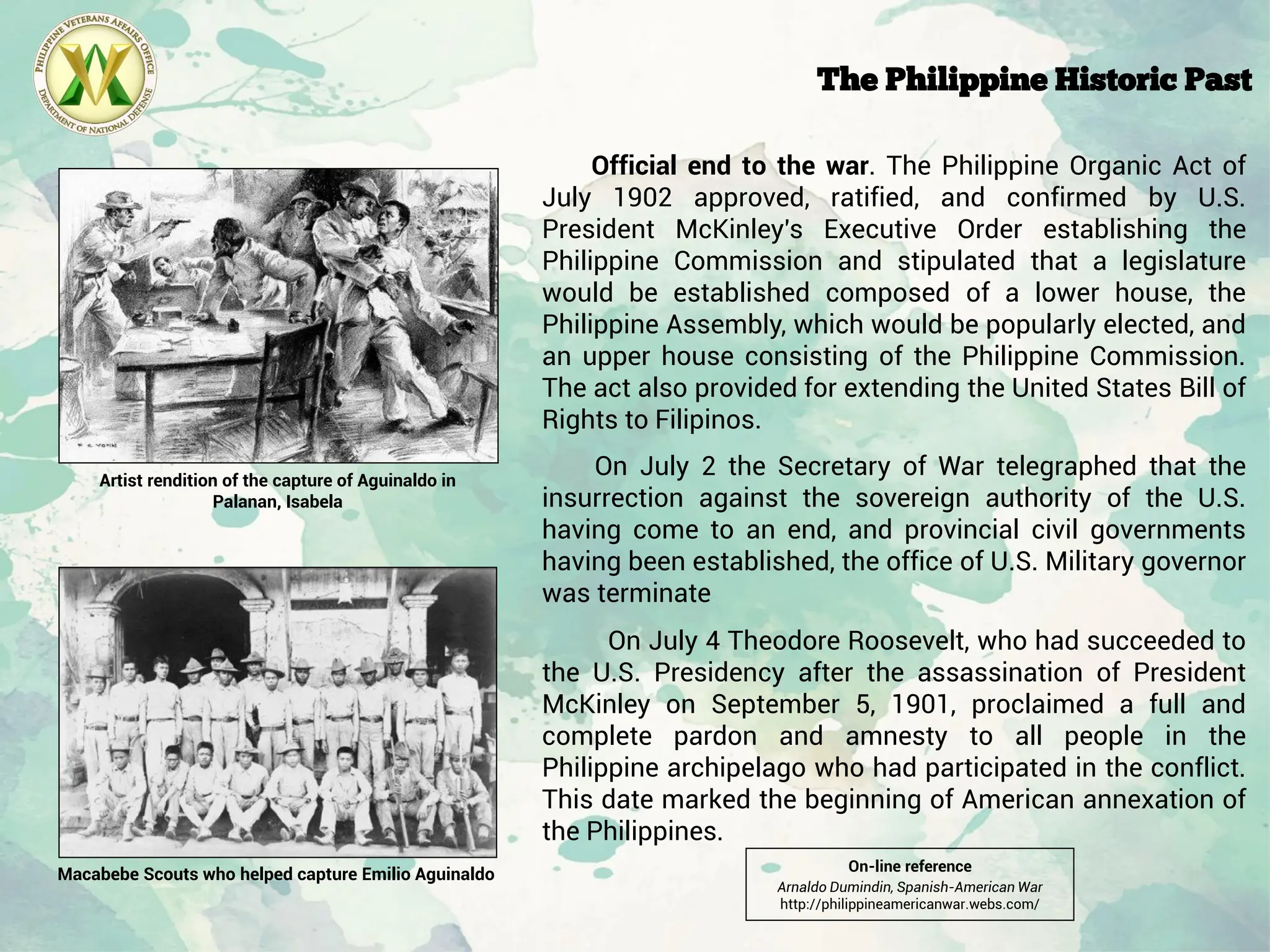The document provides a historical overview of the Philippines from 1521 to 1946. It summarizes that the Philippines was discovered by Ferdinand Magellan in 1521 and colonized by Spain until 1898. Following the Spanish-American War in 1898, the Philippines became a territory of the United States. On July 4, 1946, the United States formally recognized Philippine independence. Key events discussed include the arrival of Miguel Lopez de Legaspi in 1565 starting the Spanish colonization, the 1896 Philippine Revolution against Spain led by Andres Bonifacio and Emilio Aguinaldo, and the execution of Jose Rizal in 1896.









![The Philippine Historic Past
1896 – In the last days of August, Bonifacio called Katipunan members to a mass gathering in
Caloocan, where they decided to start a nationwide armed revolution against Spain.The event was
marked by a mass tearing of cedulas (community tax certificates) accompanied by patriotic cries.
The exact date and location are disputed, but two possibilities have been officially endorsed by the
Philippine government: August 26 in Balintawak and later, August 23 in Pugad Lawin. Thus the event
is called the "Cry of Balintawak" or "Cry of Pugad Lawin". However the issue is further complicated by
other dates such as August 24 and 25 and other locations such as Kankong. Reference
Cristobal, Adrian (2005) [1997],
The Tragedy of the Revolution,
University of the Philippines
Press, ISBN 971-542-471-6
First Katipunan (Bonifacio’s) flag first flown July 7,1892](https://image.slidesharecdn.com/philippine-history-240129070333-d8ec179e/75/Philippine-History-pdf-10-2048.jpg)






















